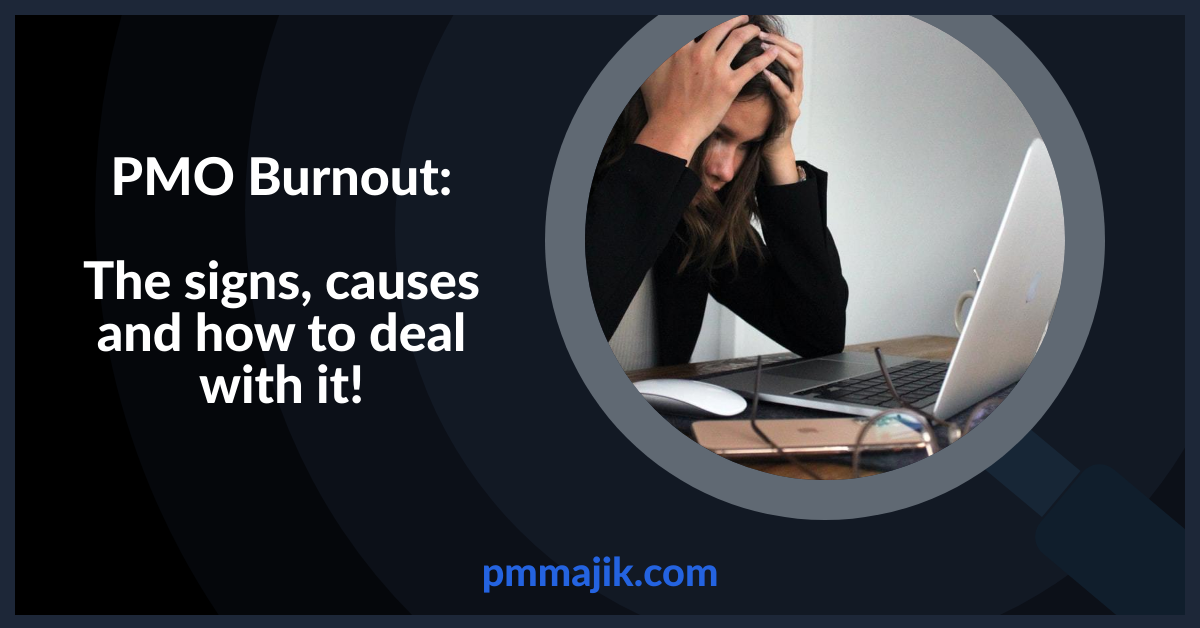Life in a project management office (PMO) can be hectic and stressful. With added pressures of managing projects remotely and resourcing challenges during the pandemic, understanding the signs, causes, and ways to deal with PMO burnout is more important than ever.
Getting burnt out at work is more than just feeling stressed – it can affect your physical, mental, and emotional wellbeing. Knowing when to take a step back and start to make changes to your work will keep you stable in the long term.
With nearly 60% of leaders saying they feel used up at the end of each workday, it’s clear that burnout is a pressing issue. Knowing that we’re going to look at:
- The signs that you or your team is reaching burnout
- The main causes of workplace burnout
- Techniques to mitigate burnout
And we’ll be covering each of these in more detail in coming posts.
What does PMO burnout look like?
Burnout leaves you mentally drained and can cause physical problems. It happens at times of extreme stress, and times when you’re being forced to change your working patterns and processes can induce it.
The main signs of burnout for PMO staff include:
- Feeling alienated from anything to do with work, being cynical, and being disconnected from your work and team.
- Headaches, stomach aches, and digestive issues can be the product of prolonged stress.
- Emotionally exhausted, where you feel less resilient, unable to cope, and lacking in energy and determination to work.
- Underperforming in your role, such as missing KPIs, missing small details in your work, and negative performance reviews.
These signs can creep up over time. Having one bad day isn’t necessarily a sign of burnout, but feeling like this for days and weeks at a time means you need to start taking action to improve your work situation.
What causes PMO burnout?
Burnout is a product of long-term stress in the workplace. Working in a PMO is always going to be fast-paced with lots of demands, but you don’t need to accept a negative effect on your life.
Some of the issues that can cause burnout at work are:
- A lack of control over direction and decision in your work
- Unclear expectations or shifting scope in projects
- Extreme levels of activity when there’s just too much to do
- Lack of support from PMO colleagues and the wider business
- No work-life balance
We’ll be looking in detail at these factors and how they can happen in a PMO in a future post.
How can I mitigate burnout for my PMO team?
As well as working on broader issues and finding a work-life balance by sticking to the working hours of your job, there are practical steps you can take to avoid burnout.
Not only will these actions help if you or your team is experiencing burnout, you should be able to prevent burnout from being a thing in the first place. Some burnout mitigation actions you can take include:
- Allowing time to plan projects properly at the beginning and not being forced into rushing preparations.
- Having the right team and skills around you, by investing in development and training for your team, PMO work will be easier.
- Prioritising accurately with a robust process in place that’s been tested and works for your organisation.
- Knowing your capacity in your PMO and with your project teams – be able to say “no” to just one more project.
- Having an employee assistance program in place and ensure that everyone on the team knows what it is and that they can use it.
We’ll get into more detail and offer more actionable steps to mitigate and prevent burnout in a PMO in a later post.
The signs, causes, and ways to prevent PMO burnout
When you know the sign, causes, and how to prevent burnout in your PMO, by extension, you’ll be creating a much better working environment.
As pressures change, remote work becomes more normal, teams being to transition to at least some office-based activities, work stresses can increase. Having a plan in place to remove unnecessary tensions for your PMO team is a savvy move that will pay off for years to come.






